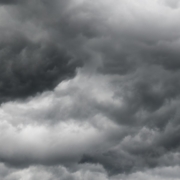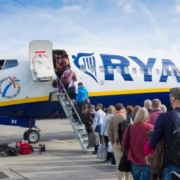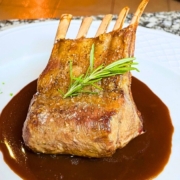Here in Lanzarote, hiking is more than a pastime. To walk here is to do more than travel from point A to point B; it is to pause time, heighten your senses, and allow yourself to be humbled by an environment that transforms with every turn in the path.
Forged by volcanic fire and shaped by centuries of human resilience, these islands (Lanzarote & La Graciosa) offer a hiker’s paradise. Discover gaping craters, vast petrified lava flows, dramatic Atlantic cliffs, hidden ravines, and plains painted in salt and silence. Here, beauty doesn’t need to shout to be heard.
The Plant That Shaped an Island
Tucked within Lanzarote’s soil lies a story that defined the island’s economy and geography for centuries: the tale of the Canary Island barilla, or iceplant (Mesembryanthemum crystallinum).
This unassuming, hardy plant was a source of immense wealth during the 18th and 19th centuries, cultivated for its soda ash – a key component in soap and glass manufacturing. The arid slopes of Lanzarote became a patchwork of iceplant crops, perfectly suited to the climate.
This industry’s boom didn’t just fuel the economy; it sculpted the agricultural terrain. The terraces and structures from this era remain visible today from hiking trails, particularly around Guatiza and Los Valles. Though the trade vanished with modern chemical processes, the iceplant endures, a quiet testament to a legacy of ingenuity and adaptation.
The Flora and Fauna of the Trail
As you explore our extraordinary landscapes, you’ll encounter a world of silent, resilient, and surprising nature. Keep an eye out for these species:
- Tabaibas and Verodes: Hardy shrubs masterfully adapted to volcanic soil.
- The Canary Island Spurge: A sculptural, drought-resistant cactus.
- The Atlantic Lizard: A swift native often seen darting between sun-soaked rocks.
- The Egyptian Vulture: A majestic bird of prey soaring above cliffs and ridges.
- Shearwaters and Plovers: Coastal birds nesting in serene shoreline areas.
- The Canary Islands Stonechat: If you’re lucky, you might spot this small, endemic bird.
Hike Responsibly
With such a diverse and precious natural heritage, it is vital that we all tread lightly. Hiking here is a privilege, and it demands our respect.
Follow these essential guidelines to ensure your adventure is sustainable and safe:
- Leave No Trace: Always carry a bag for all your waste, no matter how small.
- Stay on Marked Trails: Venturing off-path damages fragile flora and erodes the volcanic soil. The network of PR (white and yellow) and GR (white and red) trails is clearly marked for your journey.
- Take Only Photos: Do not pick plants or remove stones. The island’s beauty lies in its completeness.
- Keep Noise to a Minimum: Remember you are sharing the environment with wildlife and other visitors seeking tranquillity.
- Absolutely No Fires or Smoking: The fire risk is extremely high and the damage would be irreversible.











Leave a Reply
Want to join the discussion?Feel free to contribute!